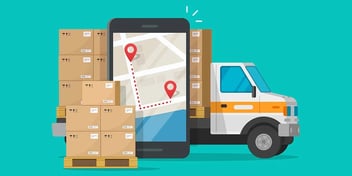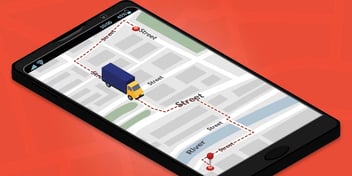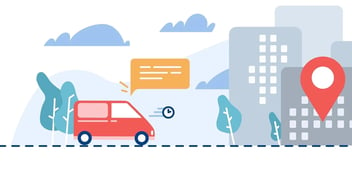Enterprises nowadays are experiencing more hardships given the rising costs of delivery operations. And yet, they remain determined to maintain high-quality delivery services to customers every single time, as a great delivery experience is essential to long-term profitability and survival. Finding the balance between keeping operational expenses low and providing flawless delivery experiences is pushing businesses to invest more in technological solutions, particularly in a route optimization app.
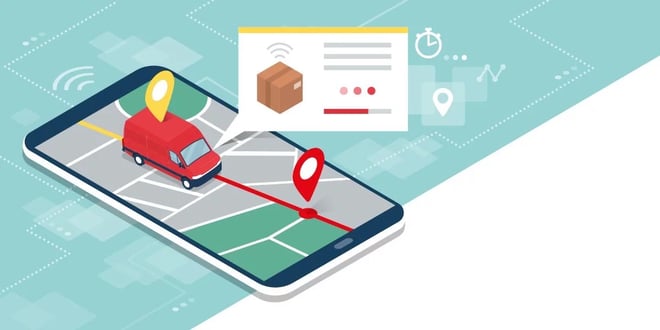
It would appear that route optimization is an effective way of keeping delivery costs to a minimum without sacrificing customer satisfaction. To some extent, a delivery route planner app can reduce a fleet’s costs by improving fuel, asset, and mileage efficiency and minimizing the time drivers spend on the road. Optimizing routes has been quite successful in helping fleet operators increase their profits.
Despite this success, the question remains: is a delivery route planner enough to achieve efficient delivery operations? We take a look at what you should know about route optimization.
How Does a Route Optimization App Work?
Dispatch routing software brings many benefits, as it allows businesses to save on fuel costs, reduce labor hours, add delivery and pick-up stops, and minimize dependence on employees. Here are some features that a sophisticated route planning app offers.
Consideration of real-time traffic conditions
Traffic costs businesses money. In 2017, the U.S incurred around $305 billing in congestion costs. As such, enterprises offering delivery services must find ways to avoid having their drivers pass through heavily congested roads. This is possible with an efficient route planner, as it guides drivers to use the fastest routes, taking into consideration real-time traffic conditions.
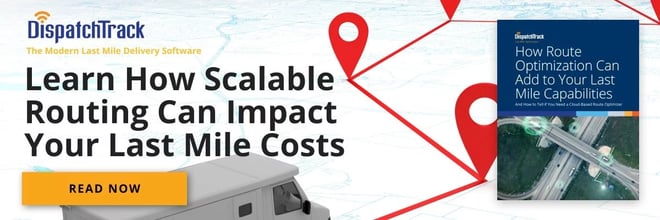
Prediction of accurate ETAs
Taking into consideration real-time traffic conditions also means accurate delivery windows and expected times of arrival (ETAs).
Order-vehicle constraints factored in
Matching vehicles with orders can be quite tedious, especially since there are many considerations in vehicle assignments such as temperature and space requirements. Dynamic route planning software considers the order-vehicles constraints when automatically assigning orders and vehicles.
Rerouting on the go
On-demand orders are difficult to handle given that consumers expect to get their packages quickly. It therefore pays for businesses to have a dynamic route planner that can handle both scheduled orders and on-demand orders by rerouting drivers already on the road.
Accurate geocoding
Geocoding is the process of changing a description of a particular location, such as an address or name of a place or pair of coordinates, to a location in a map. A planner with accurate geocoding helps drivers locate delivery and pick-up spots more quickly and easily.
Predictive alerts
A route optimization app also has control towers or dashboards, providing fleet managers with predictive alerts on idle time, vehicle breakdowns, delays, and so on.
More deliveries every day
Route planners minimize mileage and driving hours, thus allowing drivers to deliver more packages daily.
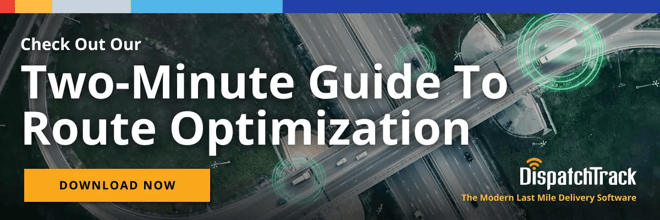
Achieving Operational Efficiency
There’s no doubt that a route planner app can help businesses cut down costs by automating manual processes and handling the complexities of route planning efficiently and automatically. But enterprises should consider that a route planner alone won’t help them achieve operational efficiency without measuring these three components.
Driver’s Performance
The best technological tools won't be of much help if their users don't—or don’t know how to—use them properly. The same can be said of route planners, as drivers also play a crucial role in the success of the solution's implementation.
Most route optimization apps can offer a great deal of data on drivers' use of the app. Did they follow the suggested route? How long did the driver take to get from one point to another? Businesses need to know how drivers are making use of the route planners. This is the only way management can determine which works and which doesn't.
Customer Satisfaction
One of the goals of using a route app is to ensure customer satisfaction. However, even businesses that rely on automated route planners cannot determine whether their customers are happy with the delivery service they experienced.
Knowing the level of customer satisfaction with the delivery service is now more important than ever. One survey showed that roughly 71 percent of retailers believe that having a clear carrier and consumer data on deliveries is essential. Understanding customers is key to providing them the delivery service they expect.
Knowing what works for the customers is crucial to optimizing delivery operations as well as increasing revenues. The delivery process plays a crucial role in customer satisfaction, as those who experienced a great delivery are more likely to become loyal patrons. On the other hand, consumers who are dissatisfied with the delivery service are likely to find another brand or online shop. Hence, measuring how the delivery affected customer experience is essential.
Overall Fleet Performance
Data on fleet performance will help owners and managers come up with data-driven decisions. It's necessary for a business to know the cost percentage of on-time deliveries for each driver, outlet, or jurisdiction, as well as the cost per delivery.
Fleet performance, site performance, cost assessment, and other insights are necessary to achieve operational efficiency, but these insights can’t be provided by a route planner alone.
A Broader Technological Solution
Route planner apps can help drivers bring packages to end customers on time, minimize fuel and mileage costs, and maximize vehicle usage. A stand-alone routing app, however, has its limitations when it comes to providing the business with data on driver’s usage of the app, customer satisfaction, and overall fleet performance.
Plus, many businesses also have external fleet drivers, which means the entity where the customer shopped from won’t receive customers’ feedback on the delivery service.
A stand-alone route planner app may offer many advanced features, but it’s incapable of addressing all the causes of operational inefficiency. Businesses offering delivery services should look beyond optimized route planning and go for a holistic approach by investing in advanced delivery management solutions that can integrate route planning.
Delivery management software will do more than automate and optimize route planning, since it will also provide data that’s crucial in addressing all pain points of the entire order fulfillment process. Learn how DispatchTrack can help with all aspects of last mile delivery by scheduling a demo now.




